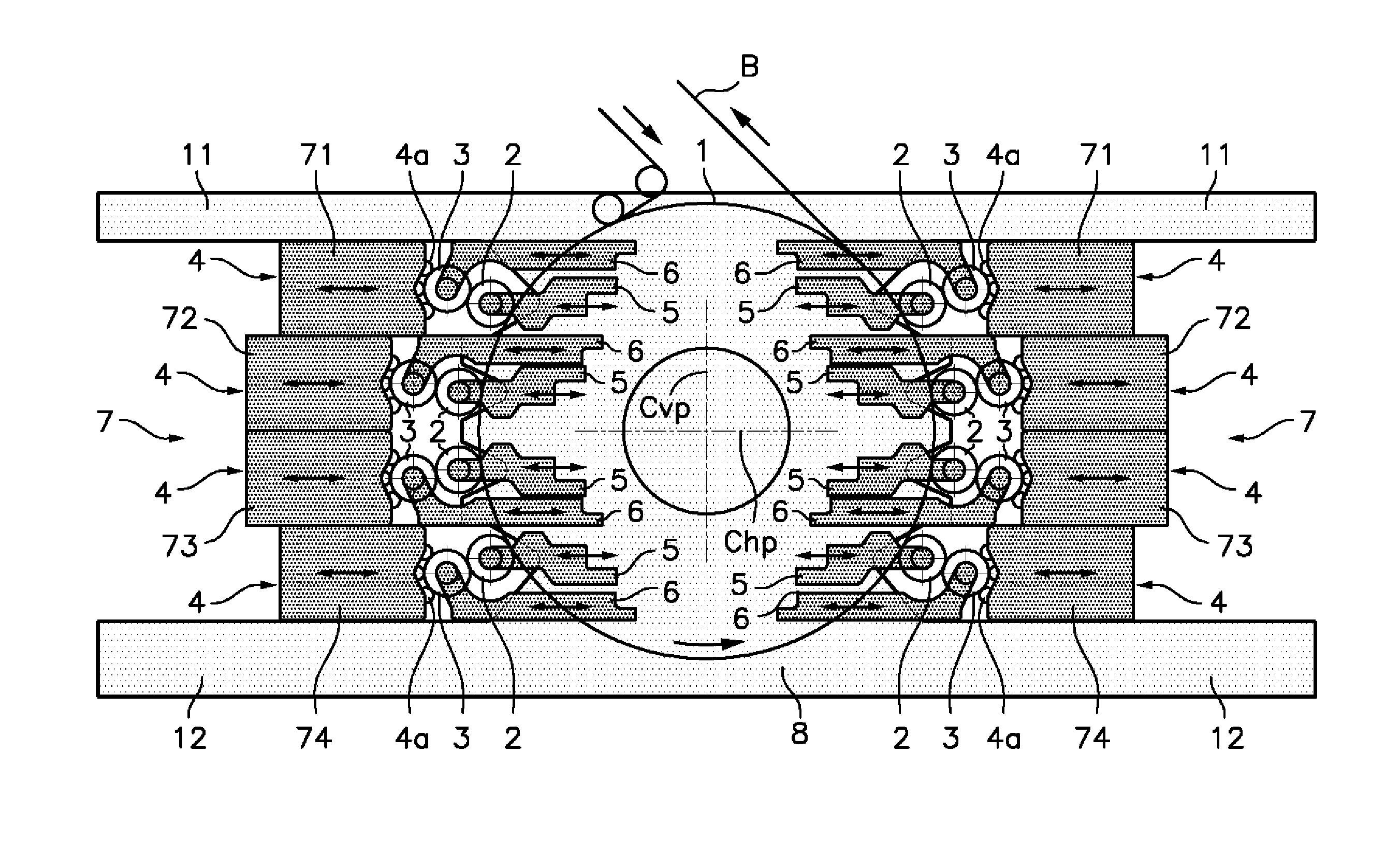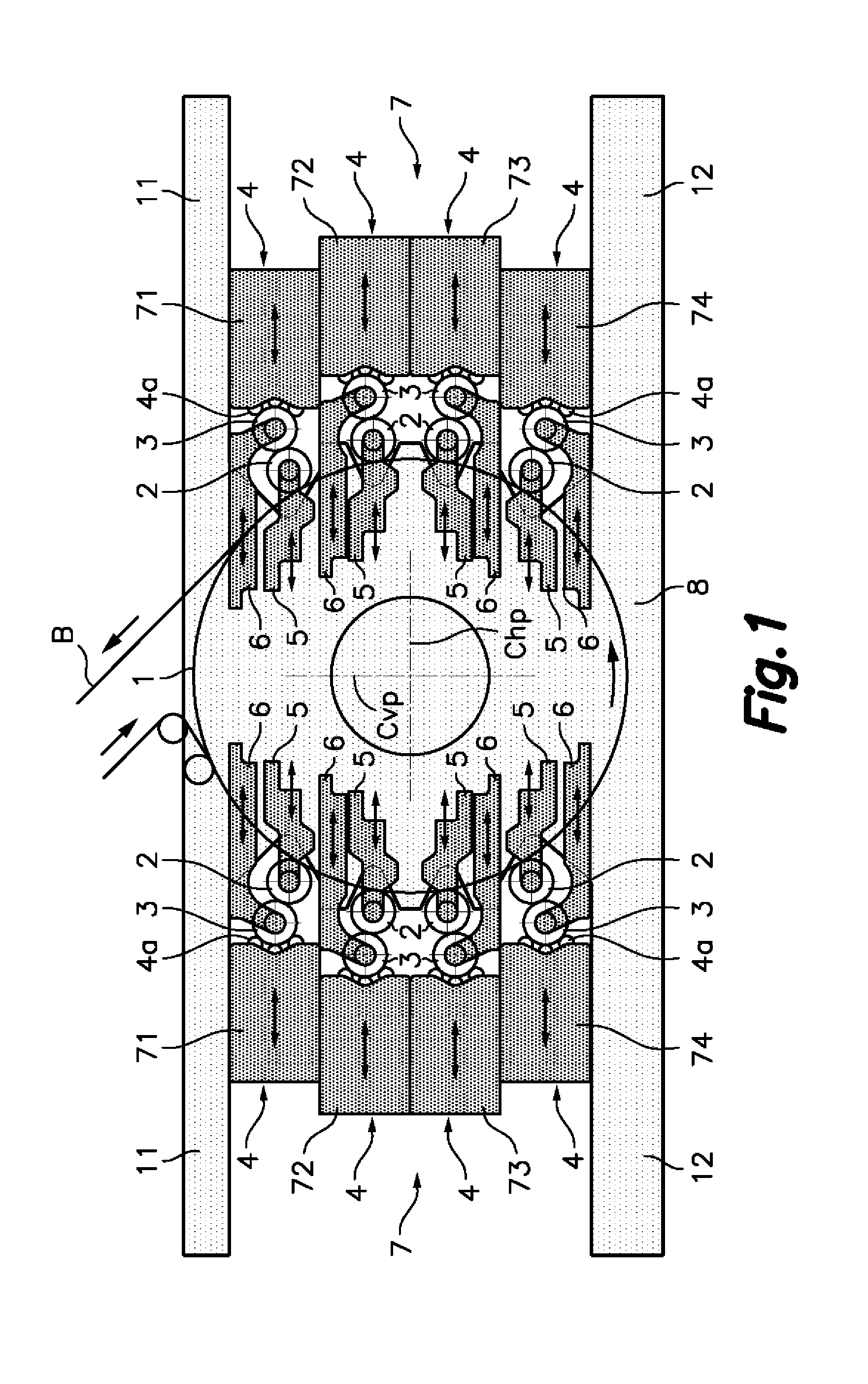Variable format offset printing machine having a central impression cylinder
a printing machine and central printing technology, applied in printing presses, rotary presses, printing presses, etc., can solve the problems of increasing the square meter price of printed substrate to unacceptable levels, too long production time of print forms, and high printing form costs per square meter printed substrate for medium and short run jobs, etc., to achieve easy construction and reduce the number of different parts, and create flexibility for individual positions.
- Summary
- Abstract
- Description
- Claims
- Application Information
AI Technical Summary
Benefits of technology
Problems solved by technology
Method used
Image
Examples
Embodiment Construction
[0045]Referring first to FIGS. 1 and 2, there is shown an offset printing machine according to an exemplary embodiment of the present invention. The offset printing machine comprises a main frame 8 supporting a rotatable central impression cylinder 1 on which a web printable substrate B is supported and a plurality of printing stations arranged around said central impression cylinder 1. In operation, the central impression cylinder 1 rotates in the direction indicated by an arrow (counter clockwise in the Figures) and the web printable substrate B moves in the direction indicated with arrows as the central impression cylinder 1 rotates and comes in contact with the central impression cylinder 1 at a web inlet side thereof (left side in the Figures) and leaves the central impression cylinder 1 at an opposite web outlet side thereof (right side in the Figures). More specifically, in the illustrated exemplary embodiment there are four of said printing stations arranged at said web inle...
PUM
 Login to View More
Login to View More Abstract
Description
Claims
Application Information
 Login to View More
Login to View More - R&D
- Intellectual Property
- Life Sciences
- Materials
- Tech Scout
- Unparalleled Data Quality
- Higher Quality Content
- 60% Fewer Hallucinations
Browse by: Latest US Patents, China's latest patents, Technical Efficacy Thesaurus, Application Domain, Technology Topic, Popular Technical Reports.
© 2025 PatSnap. All rights reserved.Legal|Privacy policy|Modern Slavery Act Transparency Statement|Sitemap|About US| Contact US: help@patsnap.com



